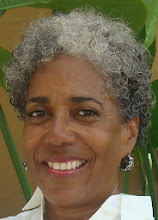If you have read some of my previous blogs, you know I like to spend the weekend mornings at Magen's Bay Beach. I enjoy walking on the beach and in the water, snorkeling, having breakfast at the restaurant and hanging out with my friends.
Besides the broad array of sea life, birds and Farrel cats there are an abundance of mongoose at Magen's Bay. Today, as I approached the entrance, a mother and her two babies crossed the road in front of me. As I searched for a parking spot I saw a small female cross the path and I thought she was alone, then I noticed her larger male companion was waiting for me to get out of his way.
They are fairly shy animals. The don't linger when they encounter people. I have seen them play hide and seek in the root system of trees at Magen's Bay. They move quite quickly and I understand if cornered can be quite feisty. You will see the mongoose throughout the island, but they are often a blur and you're not quite sure if you saw something or not.
The mongoose is not native to the Virgin Islands, they were bought in to control pests, rats, that were introduced to the island through the shipping industry. In 1872, a Jamaican sugar planter, Mr. W. B. Espeut, imported small Indian mongoose (Herpestes auropunctatus) and released them on his plantation. The rat populations were reduced, so other farmers bought them from Mr. Espeut to release them into other areas, including Puerto Rico (1877), Barbados (1878) and Cuba (1886). The mongoose in the West Indies has helped to exterminate or endanger more species of mammals, birds and reptiles in a limited area than any other animal deliberately introduced by man anywhere in the world.
While they are an interesting little animals, they are a serious lesson in "misuse" of biological pest control.




No comments:
Post a Comment